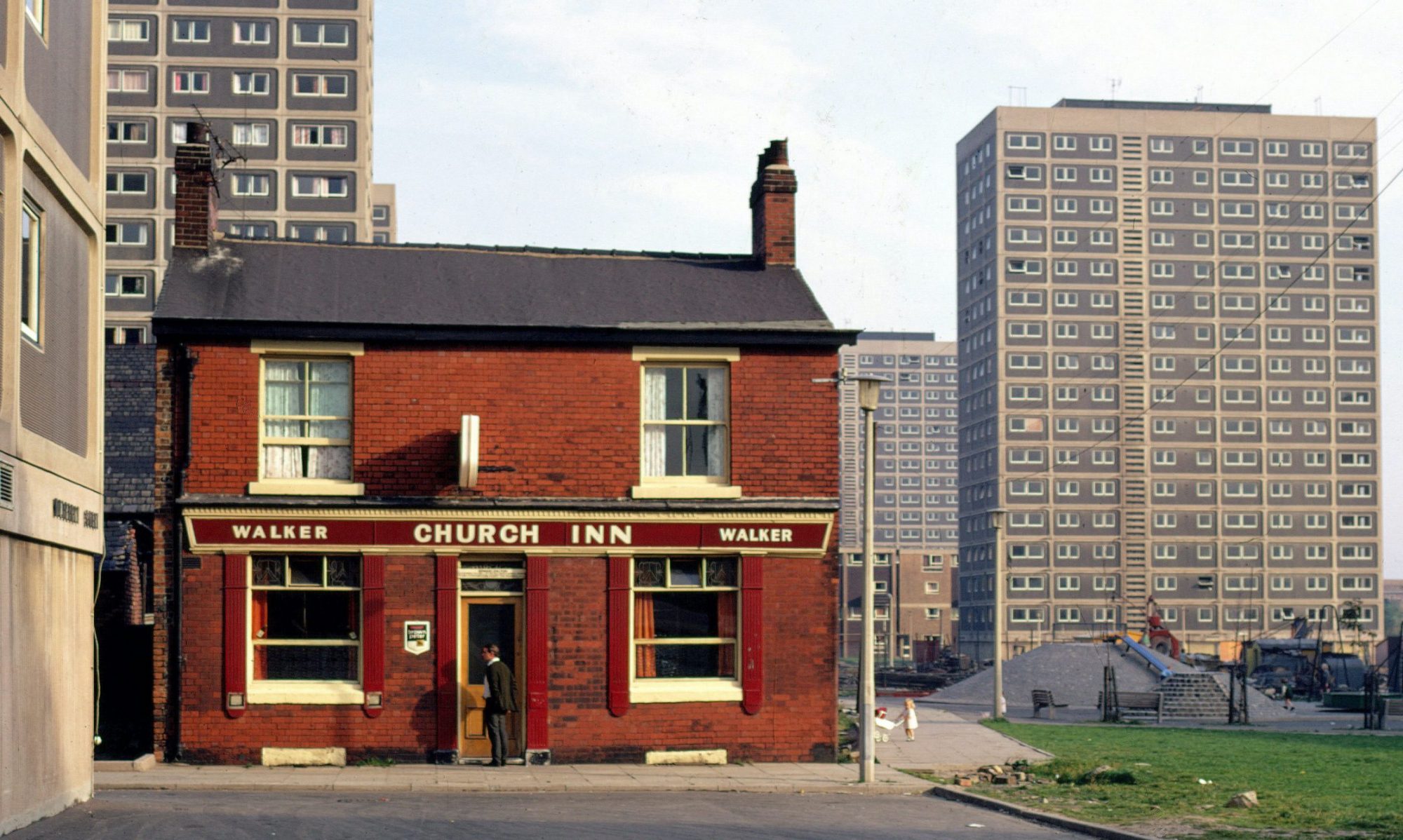The exhibition Invisible Cities will be open at the Salford Museum and Art Gallery until September 1, 2024. It is accompanied by an exhibition catalogue of the same title but with slightly more contents.

Invisible Cities juxtaposes different types of images – private photographs, architectural plans, TV and film stills, maps – and memories of Salford citizens. They all concern the large-scale redevelopment of Salford between the 1950s and 1970s. During that time 19th-century terraced housing was being demolished and replaced with modern urban infrastructures and houses.
The changes to Salfords urban fabric were profound, leaving only a few reference points – such as churches and pups – as reminders of the ‘dirty old town.’ But the changes were not only architecturally, invisible bonds to markets, shops, neighbours, were severed and replaced with different ones.
The images and memories in the exhibition catalogue are ambiguous. They speak of nostalgia and of ambitions for a better, more prosperous future; of resignation to a live changed by plans made by others and of adventurous childhood memories within the rubble of a demolition site. They also portray the people living during this period with great dignity, in distress and uncertainty, and going about their daily lives in front of the rubble of the old that formed the backdrop of the modern face of Salford.

Invisible Cities: Salford before, during, and after redevelopment 1952 to 1974 was edited by Tanja Poppelreuter and Alexandra Mitchell and designed by Craig Johnson. It can be bought for £15,- from the Modernist Society and from the Salford Museum and Art Gallery.

